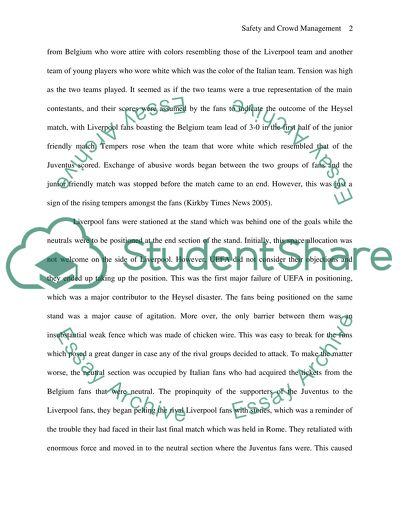Cite this document
(“The Heysel Disaster: Safety & Crowd Management Essay”, n.d.)
Retrieved from https://studentshare.org/social-science/1552696-safety-crowd-management
Retrieved from https://studentshare.org/social-science/1552696-safety-crowd-management
(The Heysel Disaster: Safety & Crowd Management Essay)
https://studentshare.org/social-science/1552696-safety-crowd-management.
https://studentshare.org/social-science/1552696-safety-crowd-management.
“The Heysel Disaster: Safety & Crowd Management Essay”, n.d. https://studentshare.org/social-science/1552696-safety-crowd-management.


